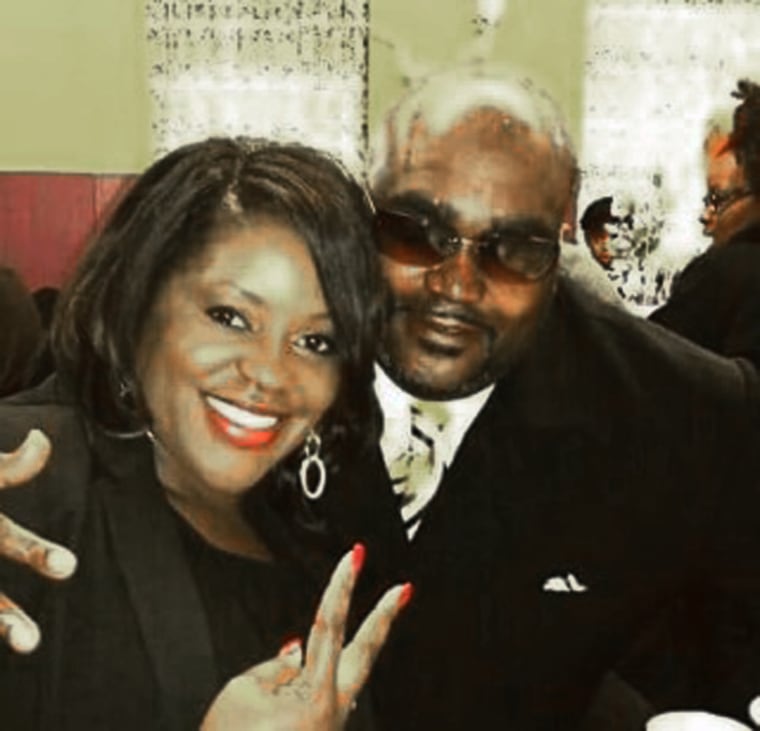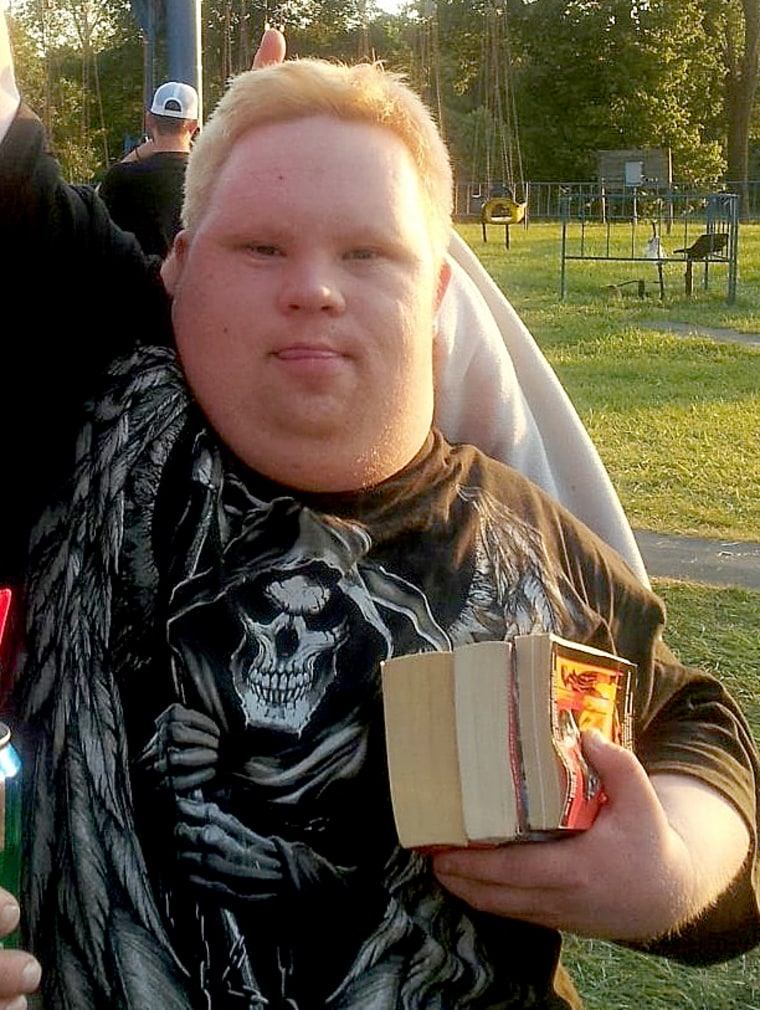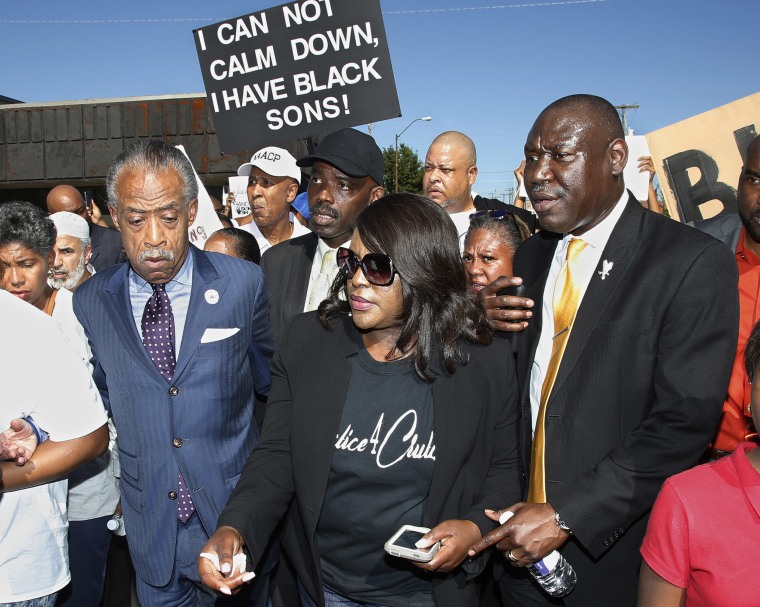On Sept. 16, 2016, Terence Crutcher's car stalled on a busy road on the Northside of Tulsa, Oklahoma. Crutcher, an amateur singer, had just left Tulsa Community College, where he'd found out that his summer music appreciation class had been canceled.
"What am I going to do with these books I bought?" he'd asked the professors.
Crutcher, 40, had hearing loss and was blind in his right eye, the result of an assault more than a decade earlier. Since then, he had struggled with drug abuse and depression, his twin sister, Tiffany Crutcher, said by phone. When his car broke down, she believes, he was in crisis.
No one will ever know exactly what was in his mind that night, because after police stopped to investigate why the car appeared to have been abandoned in the middle of the road, Crutcher, a father of four, ended up dead. His killing became the subject of a criminal trial.

Terence Crutcher's story isn't unusual. Experts and activists say disabled Americans, particularly from ethnic minority groups, have long struggled with the unfair application of force. Crutcher's is just one of a number of high-profile cases in which disabled people of color have died at the hands of law enforcement.
Haben Girma, 31, of the San Francisco Bay Area, who is Black, lives with this fear every day. "I'm horrified by the amount of sheer luck needed for a Deafblind Black woman to stay alive," Girma, an author and advocate, said in a conversation conducted over email and by phone.
"Police can't see I'm Deafblind," she said. "They might see my involuntary eye movements and assume criminality.
"If I'm with my sweet guide dog, Mylo, they might expect me to have superb hearing and assume I'm a threat when I don't respond to their commands."
Girma, who graduated from Harvard Law School, the first deafblind person to do so, said disabled people of color face greater risk when interacting with law enforcement. She said an inability to understand or follow inaccessible police commands can be aggravated by persistent social bias that, because of their race, means they are more likely to be considered criminals.
Under the 1990 Americans with Disabilities Act, or ADA, a disabled person has the right to effective communication and reasonable modifications of police policy during encounters with law enforcement when necessary.
In practical terms, that might mean police interview a deaf victim of domestic violence through a sign language interpreter rather than use a family member, a common mistake, or use simplified language when giving a Miranda warning to someone with an intellectual disability and then checking for understanding. Police must also be trained to de-escalate interactions with people who are mentally ill.
In practice, effective communication and modifications aren't always provided, said Marc Dubin, a former lawyer for the Justice Department who is CEO of ADA Expertise Consulting, which helps businesses and government agencies ensure that they comply with the ADA.
Many police departments don't apply for funding for ADA training because they incorrectly believe they never come into contact with disabled people, Dubin has found. That may be because law enforcement doesn't always recognize disability in the people they interact with, such as those with "hidden disabilities," like developmental disabilities or mental illness, or simply because police departments aren't required to keep track of their interactions with disabled people.
But that reasoning, Dubin said, is insufficient at best and dangerous at worst. "Part of professional law enforcement means you train before the incident," Dubin said. "Not at the incident."
Activists say that training can save lives.
Patti Saylor has campaigned for better training for law enforcement in interacting with disabled people since her son Ethan Saylor was killed seven years ago. Ethan Saylor, 26, who had Down syndrome, refused to leave a movie theater in Frederick, Maryland. Off-duty police officers working as security guards handcuffed him and pinned him down, one with a knee on his back, according to witnesses. He died from asphyxiation, crying out for his mother.
The Saylor family successfully lobbied Martin O'Malley, Maryland's governor at the time, to create a commission that ultimately recommended establishing the state-funded Ethan Saylor Alliance in 2015. The alliance, the first of its kind in the country, empowers people with intellectual and developmental disabilities to be the ones who train law enforcement and first responders to interact effectively and respectfully with people like them.
But Patti Saylor said she believes her family may have been more successful in getting justice because they are white. "The pivotal point was the governor giving us an audience and taking us seriously. I'm just not sure that would have happened had we not presented ourselves as white, upper middle class, educated," she said by phone.

Saylor isn't alone in thinking race plays a role. Activists have decried the absence of minority voices in the disability rights movement for years. They point to a corresponding lack of disabled voices in the Black Lives Matter movement. It's a dual set of absences that worsens outcomes for disabled people of color who come in contact with the law. Some of that is a question of sheer visibility — getting both activists and the police to see the needs of minority disabled people.
"We're a minority of a group that's already a minority," Isidore Niyongabo, president of National Black Deaf Advocates, a nonprofit that provides leadership training and advocates for members of the community, said through an American Sign Language interpreter.
Niyongabo said that since the protests over George Floyd's death, his organization "suddenly has attention." But, he said, "we wonder how long that will last."
Other activists aren't waiting to find out.
"We need your support. We are all one people," the deaf Black Canadian athlete Natasha Bacchus said through an ASL interpreter at a Black Lives Matter rally in London, Ontario, on June 7. For some, the speech showed that the movement had made progress. The crowd cheered and waved — equivalent to applause in deaf culture — and copied Bacchus as she taught them to sign, in ASL, "Black Lives Matter."
Leroy Moore, 52, is a founding member of the National Black Disability Coalition. Moore, who has cerebral palsy, said he has been stopped by police many times over the years, from an incident when, as a young man in New York, police believed he had "escaped from a group home or an institution" to a more recent experience of being pulled over in his neighborhood in the San Francisco Bay area "because I'm a Black disabled man on a nice bike."
He says the answer to the problem of deadly force against disabled Americans lies outside traditional policing.
"The solution is the building of our community so we can call our neighbor or call our community if we need help and so we don't need to call the police," Moore said.
Moore's ideas match up with what some in law enforcement said they also see as a solution. Brian Higgins, former chief of the Bergen County, New Jersey, Police Department, said agencies are increasingly tasked with "nontraditional police work" that leaves them overstretched.
"We kind of half-joke, but the cop comes to your house and he's a marriage counselor and a special needs counselor and a psychologist and a lawyer, and we want him to save our lives," said Higgins, who teaches at the John Jay College of Criminal Justice at the City University of New York.
"If it's a standard mental health crisis situation, with no violence or weapon, most officers would be happy not to be called," he said.
Crisis Assistance Helping Out On The Streets, or CAHOOTS, in Eugene and Springfield, Oregon, is an example of how it can be done, said Girma, the Bay Area advocate. About 20 percent of calls to the cities' police departments are diverted to CAHOOTS, which sends a team that includes an EMT or a paramedic and a behavioral health worker in lieu of a squad car of police officers.
Typical calls include welfare checks for the homeless, addressing mental health crises or following up on reports of seriously inebriated people in the street.
Those scenarios can be symptoms of health events — they might mean an issue for someone with a condition like diabetes or a problem for someone who has a neurological disability, neither of which is a question of the law, said Chris Hecht, 57, executive director of the White Bird Clinic in Eugene, which runs the CAHOOTS program.
Instead, teams comprise a medically trained person and a behavioral health worker who can assess the situation depending on the needs of the person and give medical attention at the scene or, if necessary, refer him or her to a detox and sobering center.
Unarmed CAHOOTS staff members try to reduce anxiety in the people they're coming to help, for whom the sight of armed officers can trigger stressful memories.
"It's so different when the van arrives and two people wearing jeans and hoodies exit the car. You know, they really have a leg up on the officers," Hecht said in a phone interview. "That's the beginning of an encounter that is really aimed at defusing the tension in a situation, de-escalating it and figuring out how we can help the person who's in crisis."
Ten cities are in talks with CAHOOTS to replicate the program, Hecht said.
Download the NBC News app for breaking news and alerts
Of course, with a traffic stop, calling in CAHOOTS might not be an option. It wasn't in the case of Terence Crutcher, the man who was killed on the side of a busy Tulsa road in 2016.
That evening, Tulsa police Officer Betty Shelby was on her way to a domestic violence call when she stopped to investigate why Crutcher's car was standing in the middle of the road. Shelby later testified that Crutcher, who was outside the vehicle, didn't respond to her commands. In video from the police dash camera, Crutcher is seen walking toward the car, hands up, as several officers follow with weapons drawn.
The family's lawyer, Damario Solomon-Simmons, said by the phone that another officer, Tyler Turnbough, who arrived to give backup, shot Crutcher with his stun gun and that, within seconds, Shelby shot Crutcher with her gun. Turnbough then stunned Crutcher a second time before he fell bleeding to the ground and died, Solomon-Simmons said.
The medical examiner found the drug PCP in Crutcher's system, but prosecutors said that Crutcher showed no signs of aggression and had no weapon and that Shelby was just "guessing" that he was armed. Shelby was acquitted, although several jurors questioned her judgment in the incident.
"Terence wasn't even committing a crime," said Tiffany Crutcher, his sister. "He needed help."

Tiffany Crutcher continues her family's fight for justice over her brother's death, working full time for the foundation that bears his name. After a string of setbacks in their attempt to hold the officers who killed Crutcher, the city of Tulsa and former Police Chief Chuck Jordan accountable, Tiffany Crutcher presented her recommendations on police reform at a congressional staff briefing in Washington in May 2019.
"My brother Terence was not a fleeing felon. He was not suspected of committing a crime, nor was he under arrest," Crutcher said that day. "Yet they treated this brother, father, son, Black man with struggles and student who was intentionally trying to better his life through education like an armed criminal."
Thirteen months later, Crutcher allowed herself a moment of celebration while watching House Speaker Nancy Pelosi, D-Calif., present the Justice in Policing Act of 2020. The bill, which passed the House on June 25, would ban neck restraints, require police departments to provide data on use of force to the federal government and make it easier for people to recover damages when police are found to have violated their civil rights. After it passed 236-181, broadly on party lines, the bill still faces a vote in the Senate.
"I couldn't help but shed a tear, because some of those recommendations were what I had presented a little over a year ago," Crutcher said. "If those could have been implemented a year ago, would so many others still be alive?"


